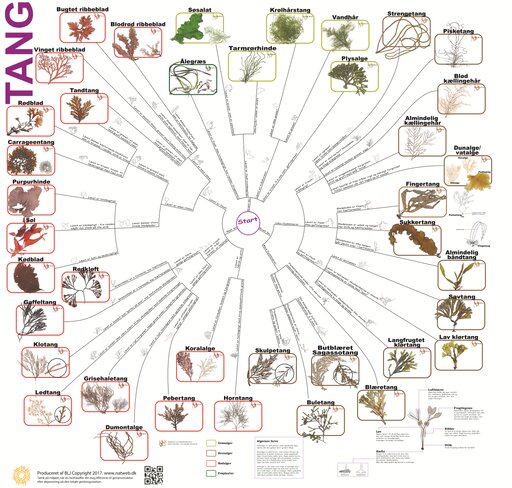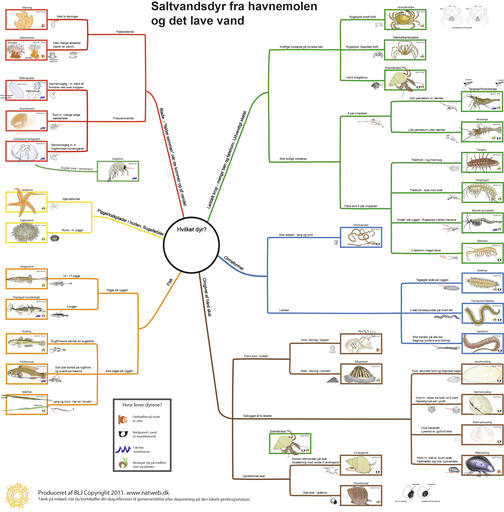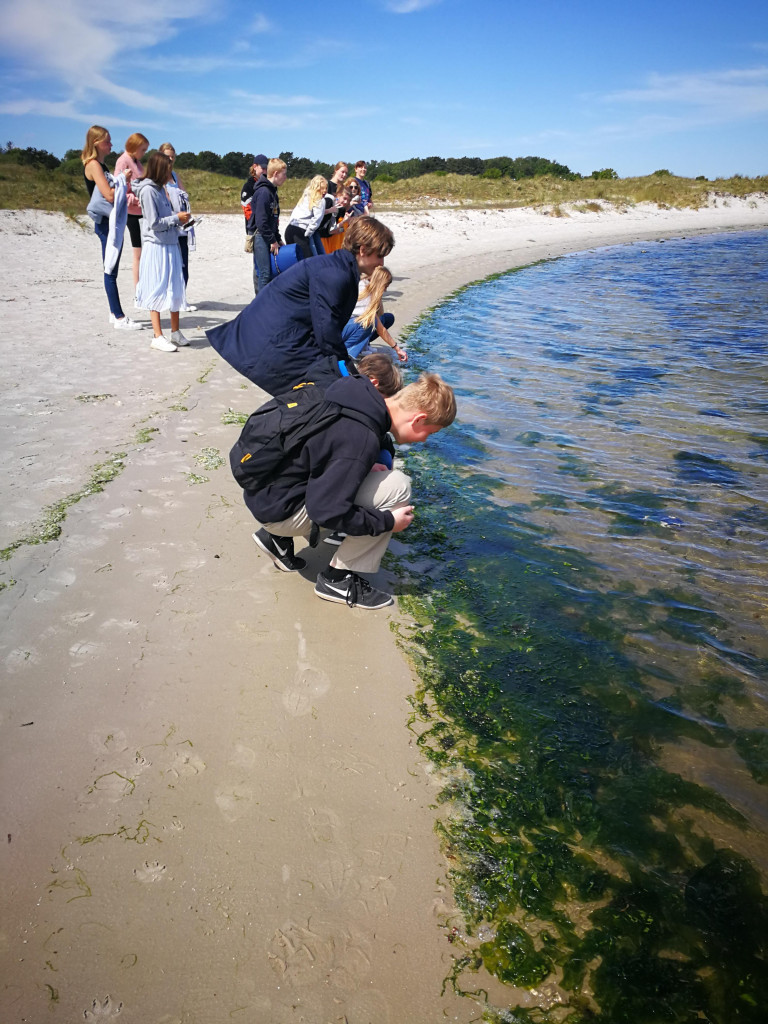
Ocean Literacy
Ocean LiteracyOL1 consists of 7 principles. Understanding these principles is essential for understanding how important the oceans is for the planet and its inhabitants, over and under the surface.
There is one big ocean, OL2 rich on food, energy and much more. Without the ocean the climate would be rough and harsh - the ocean regulates the climate OL3.
Under the surface we are still discovering new species, even new eco systems, and these new discoveries are only top of the iceberg. The ocean i diverse and versatile OL1.
To be an ocean literate person, is to know and understand how the ocean influence us, and how we influence the oceanOL5. To live and interact in a sustainable way with the ocean.
When learning about the ocean, the pupils are more likely to want to conserve it. Working with biodiversity locally, will mirror how the lager system can benefit from changes in how we as humans interact with the ocean and a more sustainable future. Therefore, we want to inspire the pupils and give them a sense of empowerment and agencyOL6 and place and community OL7.
With the above, we hope that knowledge, skills, engineering, creativity OL8 and technology OL9 will go hand in hand, and make the pupils more ocean literate.
Multimedia
Links

Teaching and Learning Map
The biodiversity resource is molded after the BSCS 5E Instructional Model. This model consists of five phases: engage, explore, explain, elaborate, and evaluate.
[Embed: 5E-model.png]] NOT FOUND
The 5E model emphasize the importance of pupils own inquiry and questioning.
In this resource, the evaluation is integrated in the other phases and involves pupils assessing their understanding and abilities.
Engage
The purpose for the ENGAGE phase is accessing the pupils prior knowledge about the ocean and help them become engaged in the concept of biodiversity through the use of short activities that promote inquiry and pupils questioning. The activities tries to make connections between past and present learning experiences, expose prior conceptions, and organize their thinking toward understanding the fundamental Ocean LiteracyTM1 principal that the ocean support a great diversity of lifeTM2
-
Watch video/academic reading: Watch the video “Ocean Literacy” (DanishTM3dk |EnglishTM3uk| SpanishTM3es). Se example of activities for academic reading and reading comprehension relating to the video here (DanishTM4dk|EnglishTM4uk|SpanishTM4es).
-
Running brainstorm: Pupils conduct a running brainstorm 3 to 5 questions. It could be over the following:
a) Which animals do you especially associate with the ocean?
b) Which plants do you associate with the ocean?
c) What does the ocean mean to you?
d) What does it take for a rich animal and plant life in the ocean?
e) What do you think the ocean means to life on Earth?
-
Excursion to land habitat: Excursion to place in the immediate area. Pupils gain experience with actual biotopes and how biodiversity is dependent on the surrounding environment.
a) Find an area with mono-culture. It can be a cultivated field, a well-kept lawn or a conifer plantation. Throw the “hula hoop” you brought with you to a random spot on the ground and count number of plants and animals.
b) Find an area with poly-culture. An area with natural vegetation. It can be an untouched meadow, forest clearing, or the forgotten corner of the garden. Throw the hula hoop you brought with you to a random spot on the ground and count plants and animals.
c) Compare the results. Do the same conditions apply in the ocean?
-
Excursion to the coast/aquarium: We highly recommend an excursion to the coast and/or your local aquarium in the ENGAGE phase to get ideas for what it takes to conduct a similar study of the biodiversity in the marine environment.
As we are fortunate to be able to visit the Kattegat Center, pupils are introduced to the local marine environment by enthusiastic experts in the field.
-
Dance biodiversity: Use danceTM5 to access pupils prior knowledge about the ocean and help them become engaged in the concept of biodiversity.
-
Pupils formulating driving questions: On the basis of the activities in ENGAGE phase, pupils are challenged to formulate driving questions.
Examples of driving questions from the Danish pilot are:
a) What is the significance of light for biodiversity in the ocean?
b) Is there a difference in the oceanwater around the world's oceans and what does it mean for biodiversity? What can we measure?
c) What are the animals in the water in the Kattegat Center's lagoon?
d) How can a fish be seen to be adapted to marine life?
e) What can we do to increase the biodiversity of our oceans around Grenaa?
Explore
The purpose for the EXPLORE phase is to get pupils involved in exploring biodiversity in their local marine environment, providing them with a chance to build their own understanding based on their driving questions. Help them link their driving question with their investigations.
-
Observation of habitat with 360 underwater camera: This activity focus on pupils identifying animals in the local marine environment using a documentation template (Danish TM6dk|English TM6uk||Spanish TM6es). You can find a short guide to the activity here (Danish TM7dk|English TM7uk|Spanish TM7es). In connection with the recordings, relevant abiotic data is noted to describe the conditions.
There are multiple way document species, but we recommend using 360 video camera TM8 (e.g. Garmin VIRB 360 or GoPro MAX) and record still-image or video. To attract animals that may be in the area, we recommend to feed with mussels.
The recordings (360 video or still images) can be uploaded to the Ocean connection VR-platform TM9 and stored in the cloud. Each recording (360 image or video) is GEO-located when uploaded to the platform. The VR-platform offers tools for pupils to edit and enrich their recordings.
-
Collect and identify macro algae/marine organisms: In this activity, an excursion to the site to collect and identify macro algae. Use an identifying key.


-
Dissect a native fish species: This could be facilitated by your local aquarium.

Explain
The purpose for the EXPLAIN phase is to provide pupils with an opportunity to explain what they have learned so far and figure out what it means.
-
Academic reading: Read various academic texts about the concept of biodiversity.
-
Follow up on the “We dance biodiversity” activity.
-
Landart based on dissection of native fish.
Elaborate
The purpose for the ELABORATE phase is to allow pupils to use their new knowledge and continue to explore its implications. Through the work, the pupils gain a deeper understanding of the ocean and its significance for our planet. They gain an understanding of the importance of high biodiversity. This insight gives pupils motivation and ability to act in relation to this. Examples of elaborate activities could be:
-
Systematic study of growth rate for sea salad: (DanishTM22dk|EnglishTM22uk|SpanishTM22es). Through this growth experiment, the pupils will investigate which conditions influence the photosynthesis of the macro algae.


You can find samples of results here (text and img)
-
Modelling the Greenland pump: Through modelling, the pupils will study the movements of the water masses in the oceans. The Greenland pump (Model)
Evaluate
Pupils choose the best medium to pass on their newfound knowledge. They consider their message and in what way it is best communicated. They work with scientific concepts and understanding of Ocean Literacy in their dissemination and communication.
Ocean exhibition/show
-
Photo exhibition with LandArt
-
Stands where the various hypotheses, experiments, models, etc. are presented by the groups to the fair guests.
-
Dance show at the end of the day.
-
Vlog, Blog, Website, Campaign, Article
Multimedia

Aquarium
It is challenge have pupils observe what unfolds under the ocean surface. At the aquarium you have a chance to see how it all unfolds right before your eyes. It is possible to watch organism in a habitat similar to the organisms natural habitats. You can study behaviour and the outer morphology of the animals and use the knowledge to be more aware of how the marine organism behave and live in the ocean.
When you are in an external setting there are more opportunities to involve different senses and learning activities with “hands on” are easier to promote. The “hands on” activities will together with “minds on” activities combine the theory and practise in a way that can influence the learning outcome. The students will in an aquarium have the opportunities to watch some of the organisms that will live in the Nursing Grounds for Fishs. That can promote an engagement in the project.
Visiting the aquarium can be of great value for the kids and teacher. The knowledge base here is huge, and working togerther, staff and teacher, its possible to incorporate inhouse and external subjects for the kids.
Activities could include:
- Dissection of fishes
- Introduction to what marine biodiversity is
- Adaptation of marine life
At the aquarium, the pupils will get to meet a professional, working with marine life. Involving him/her in the project can be useful. They will have specific knowledge on the local marine ecosystem. Maybe you can work together on launching the Nursing Grounds for Fish on a location specified by the staff from the aquarium.
Conservational work is part of the aquarium’s agenda, and therefor this can be a great opportunity for them.
Conservational work is part of the aquarium’s agenda, and therefor this can be a great opportunity for them. Other than that, getting the proper approvals by local authorities can be easier the aquarium on board.
Multimedia
Links

The Big Picture
In this KS3 resource, pupils are exploring biodiversity in the ocean. It’s transdisciplinary where pupils build Ocean Literacy in biology, chemistry, physics and geography studying a local marine habitat.
Pupils are engaged in inquiry-based science education. Together with the local aquarium, they are investigating key concept like adaptation, behaviour and food chain and principal ocean literacy ideas that the ocean supports great diversity of life and ecosystems and that we as humans and the ocean are inextricable linked. At the same time, they are taking small steps towards environmental awareness, a sense of responsibility for a more sustainable use of our oceans and agency for making a difference in their local community.
This biodiversity-resource is moulded around an 5E-model. The pupils are introduced to “lack of biodiversity” as a major problem in theocean. As part of their inquiry into biodiversity in their local marine habitat, they document and monitor their habitat with 360 camera/ VR-headsets using digital technologies. The Ocean Connection VR-tool plays an important role in documenting and communicating their findings. Creative teaching and learning are an integral part of the resource, where dance and land art are examples where we recommend applying creative pedagogies. Connections between the principles drawn for ocean literacy & digital/creative pedagogies can be identified in multiple ways, particularly in the pupil-centred foci, the relationship between the ocean (natural world) and its relationship with us (the humans), and a questioning, inquiry stance central to science in society .
Multimedia
Links

Creative Pedagogies
Creative pedagogies has proven to be able to help pupils relate to and connect with the Ocean not only on an intellectual level, but also emotional and physical. In the biodiversity project, we suggest using creative teaching and learning in multiple ways.
[Embed:CreativeArts_Dance.mp4]
In the Teaching and Learning Map we suggest that the pupils use creative pedagogies like dance performance and land art.
-
We dance biodiversity: The ocean and its movements speak to us all. Therefore, we take the dance into the process, in order to sense the biodiversity through the diversity of movement that spontaneously occurs when we “dance the ocean”.
We work with both structured exercises and free improvisation. The dance sequences are added continuously where there is a need to break the day with physical movement. The finished-choreographed dance will be on display at the closing Ocean Fair.
[Embed: BiodiversityDance3.mp4]
Here you see some more examples: Example 1, Example 2, Example 3
-
Land Art: After dissecting fish, we have to recreate them with the materials of nature through the sensations we have made about the fish's physique, shape and color. The pupils are thus given the task of making a work of art by and with nature, based on their previous experiences with the fish.
Landart is a mixture of sculpture and landscape architecture. The landscape and the pupils' works are connected. We work with, among other things, water, stone and wood, leaves and berries.
[Embed:LandArt.jpg]
Pupil empowerment and agency is a core principle in creative teaching and learning and might be a key for them to fully engage with biodiversity, develop their Ocean Literacy and act on their learning to make positive change for the marine life in their community. Creative pedagogies designed to promote emotion, affect and empathy and embodied/material knowledge and dialogue can assist in breaking down barriers due to the inaccessible nature of the ocean and promote a sense of place and community.
Multimedia
Links

Digital Technologies
The ocean is not easily accessible. It is often quite difficult for pupils to have primary experience with the marine environment, especially within a school setting with safety restrictions due to swimming and water safety issues. In this resource, we therefore suggest to use digital technologies like 360 cameras and VR-headsets to explore the marine organisms in their natural habitat. Although the project values ocean literacy learning before technology, it’s important to acknowledge that the use of these technologies also gives pupils the opportunity to be producers of digital content and acquire technological literacy.
Using 360 underwater camera (e.g. Garmin VIRB 360 or GoPro MAX) to record a habitat will provide pupils with real data. The recordings (360 video or still images) can be uploaded to the Ocean connection VR-platform and stored in the cloud. Each recording (360 image or video) is GEO-located when uploaded to the platform. The VR-platform offers tools for pupils to edit and enrich their recordings.
Using a VR-headset (e.g. Occulus Quest 2 or Google cardboard) to look at the recordings afterwards, will emerge the pupils in the ocean in a very realistic way seeing the invisible. The immersiveness of VR almost makes them feel physically submerged. To our experience, they can spend a long time just looking around, exploring this new world. Watching the recordings with VR-headset provides a very realistic experience for the puils, and it is a good and motivating way to work with data collection and evaluation. If your school do not have access to VR-headset, the pupils can access the 360 recording on the VR-platform DT7using a standard tablet/computer.
Pupils become very attentive and active viewers if they have to find and select small sequences that show marine life in their natural habitat.
The 360 video can be a good tool for storytelling. This storytelling can be facilitated by adding text, sound, video, 3D-objects, and hyperlinks on the Ocean Connection VR-platform or on third-part platforms like Co-Spaces. This experience can be shared with others across EU.
At each recording, other relevant data is collected.
Above the water, wind speed, wind direction, whether it is raining and temperature are noted. Both for that day, and the day before.
Below the surface of the water, temperature, salinity, oxygen content and nitrate content are measured.
Multimedia
Links to VR tool
Links to evidence base

Teacher Reflections
content

Design Material
content









